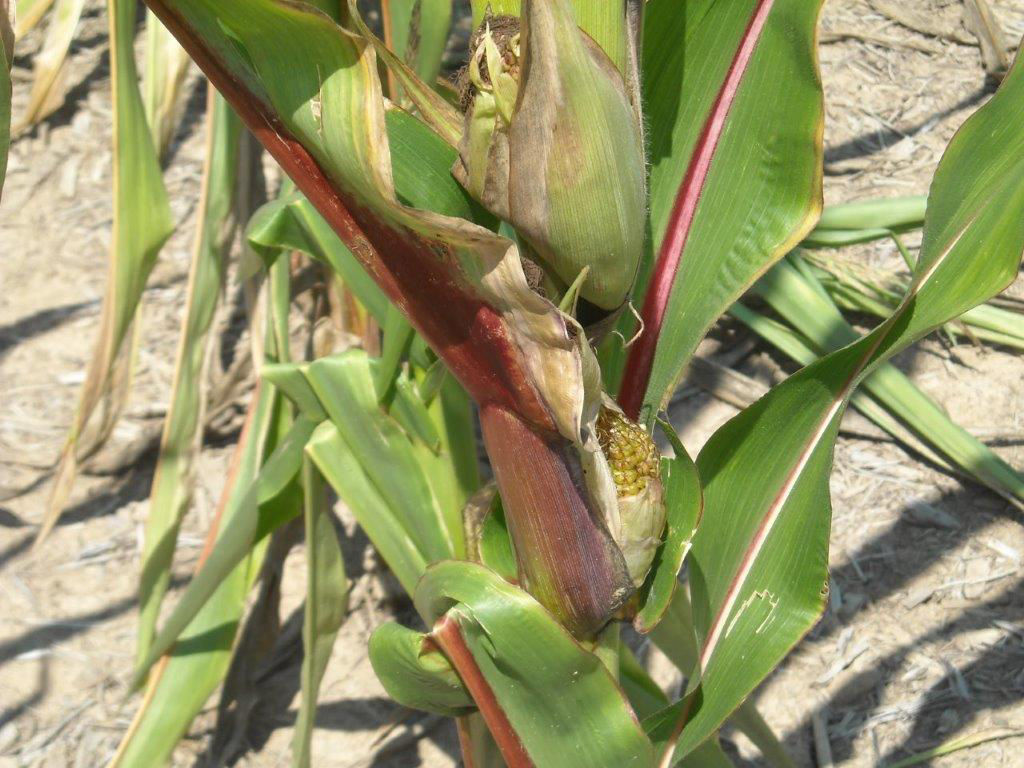Tillage Considerations after a Drought
October 31, 2023
The effects of drought go past lost yield potential (Figures 1 and 2). Beyond a current drought-stricken crop is the hope that next year’s crop is much better. Agronomic and financial decisions must be made after harvesting a less-than-ideal crop to help increase the likelihood of a successful future crop. The unknown factor is if drought conditions will continue or if growing conditions become favorable. Regardless of the conditions, agronomic factors to consider that can help increase the potential for a successful crop include managing tillage practices, residue, weed control, and fertility.


Unless a drought-stricken field is already in a limited tillage program (no-till, strip-till), there can be a strong urge to till hardened soil. However, consideration should be given to limiting tillage after a drought. Large, hard clods can result from tilling hardened soil. If winter moisture is negligible, the clods may still be present in the spring and be difficult to break apart with secondary tillage. This condition can lead to an unacceptable seed bed and compromise seed-to-soil contact, ultimate emergence, and stand establishment. Leaving the soil intact in the fall helps allow any water to enter shrinkage cracks and flow deeper into the soil profile. Depending on soil texture, soil organic matter, and surface residue, each tillage pass can cause the loss of 1/4 inch of soil moisture.1
Tilled, dry soil without adequate residue is subject to wind erosion. Keeping the residue intact can help capture snow and retain much needed water in the field. Standing residue from no-till can trap 70% more of the water from rainfall or snow melt than conventional tillage.1 Surface residue also helps retard evaporative soil moisture loss, drying from wind, and as previously mentioned, erosion. If residue is minimal, such as after a soybean crop, consider planting rye or wheat as a cover crop.2 If a chisel plow is used, using sweeps instead of twisted shovels will bring less soil to the surface and help keep the plant residue in place.
While harvesting a drought-stricken crop, weeds may be evident because the crop was unable to provide ample canopy to help prevent weed growth. Instead of fall tillage, fall-applied residual herbicides should be considered to help manage winter annuals and other weeds.
Herbicide carryover from the previous crop should be a consideration as the potential for carryover can increase after a drought. Soils with a high pH may be more susceptible to carryover, particularly sulfonylurea (SU’s) or triazines. HPPD and imidazoline chemistries may carryover as well. Herbicide labels should be reviewed to be aware of potential carryover issues. If the winter remains dry, weed management with herbicides should be considered in the spring to reduce the potential for soil moisture loss from tillage. If tillage must be used, it should be used close to planting to preserve soil moisture.
Depending on corn maturity, stalk nitrate sampling could be conducted to secure a status of nitrogen (N) uptake. Under drought conditions, N utilization is usually reduced; therefore, unused N can remain in the soil profile. Please see Performing a Corn Stalk Nitrate Test for additional information. If dry conditions continue, there can be N for a following continuous corn crop or excess for a soybean crop. Other soil nutrient levels, such as phosphorus and sulfur, may be at higher levels after a drought. Soil samples should be pulled to help determine nutrient levels to avoid overapplication or possibly not applying more if needed.
Sources
1Al-Kaisi, M. 2020. Consideration for tillage decision this fall after drought. Integrated Crop Management News. Iowa State University Extension and Outreach. https://crops.extension.iastate.edu/cropnews/2020/10/consideration-tillage-decision-fall-after-drought
2Al-Kaisi, M. 2003. Managing soils under dry conditions. Integrated Crop Management News. Iowa State University Extension and Outreach. https://crops.extension.iastate.edu/encyclopedia/managing-soils-under-dry-conditions
Web sites verified 9/29/23. 1022_305946